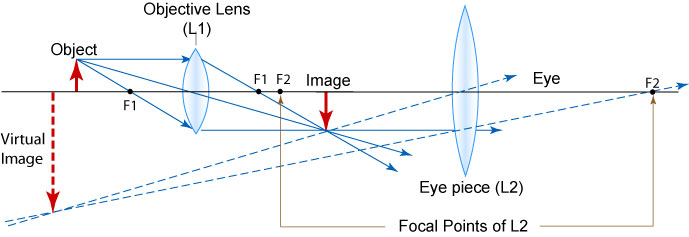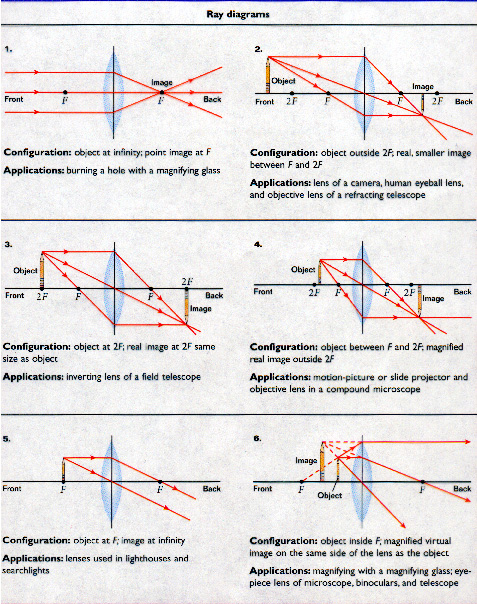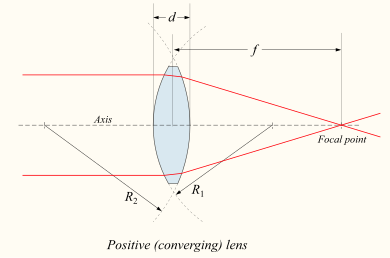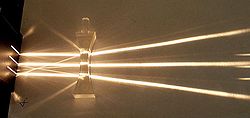The Differences between Microscope and Telescope
The Compound Microscope
-We use it to view very small objects.
-Microscope consists of two convex lenses:
a)The objective
-the lens which is nearest to object.
-a powerful convex lens with a short focal length.
-focal length of the objective is fo.
b)Eyepiece
-the lens which is nearest to the eye.
-eyepiece has a longer focal length than the objective.
-focal length of the eyepiece is fe.
The Telescope

-Astronomical telescope consists of two convex lenses:
a)The objective.
b)The eyepiece.
-The objective is a convex lens with a wide aperture and long focal length to enable the telescope collect as much light as possible.
-Eyepiece is a convex lens of short focal length.
-The picture shows three actual rays coming from the top of a distant object.Since the object is far away,the rays are assumed to be parallel when incident on objective lens.
-The rays at point I will emerge parallel from the eyepiece and appear to come from the top of final image at infinity.
-The total distance between the objective and the eyepiece is = fo+fe
-The magnifying power of the telescope :
M=fo/fe
-If the power of eyepiece is increasing,the power of objective is reducing,it can give a high magnification.


















 \
\















